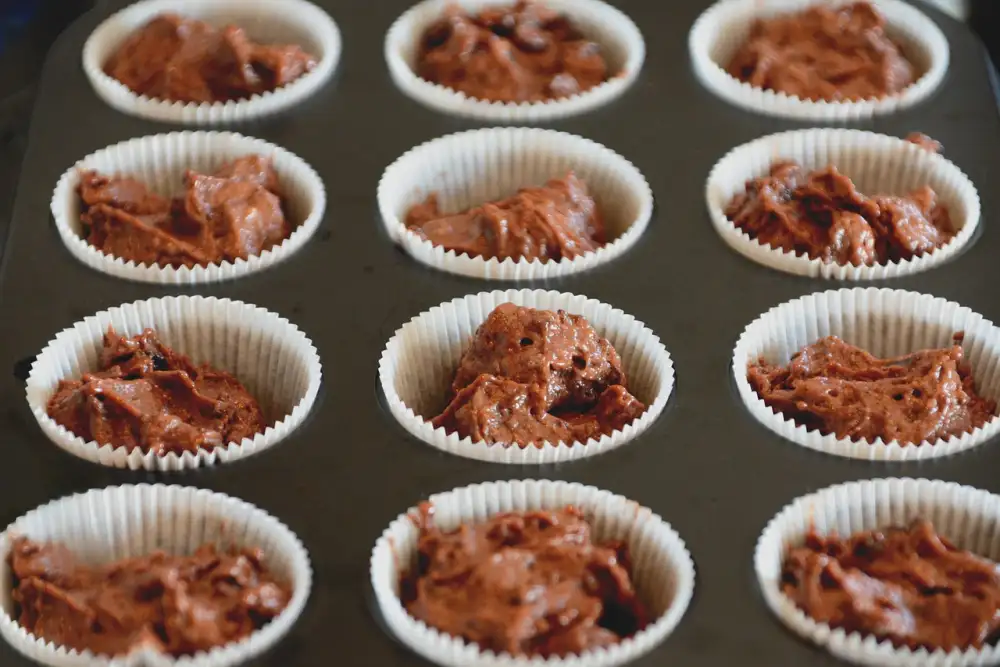Perfecting the Art of Tempura Batter: A Delicate and Crispy Japanese Recipe

Tempura batter is a key component in Japanese cuisine, known for its delicate and crispy texture. It is commonly used to coat and fry various ingredients such as seafood, vegetables, and even meat. The art of making tempura batter lies in achieving the perfect balance between lightness and crispiness. In this article, we will explore the secrets behind creating the ideal tempura batter and share tips on how to achieve the desired consistency. Whether you are a seasoned chef or an amateur cook, mastering the art of tempura batter will elevate your culinary skills to new heights. So let's dive in and discover the magic of this delectable Japanese recipe!
Ingredients needed for Tempura Batter
To make the perfect Tempura Batter, you will need the following ingredients:
1. All-purpose flour: This is the main ingredient in Tempura Batter and gives it its light and crispy texture.
2. Cornstarch: Adding cornstarch to the batter helps to create an extra crunchiness.
3. Baking powder: This ingredient helps to give the batter a light and airy consistency.
4. Ice-cold water: Using ice-cold water is crucial as it helps to keep the batter cold, resulting in a crispier coating.
5. Egg: Adding an egg to the batter helps to bind all the ingredients together and adds richness.
6. Salt: A pinch of salt enhances the flavor of the batter.
7. Optional seasonings: You can also add some additional seasonings like garlic powder, onion powder, or paprika for extra flavor.
By using these simple ingredients, you can create a delicious and crispy Tempura Batter that will elevate your dishes to new heights.
Step-by-step instructions on how to make Tempura Batter
To make Tempura Batter, follow these simple steps:
- In a mixing bowl, combine 1 cup of all-purpose flour and ¼ cup of cornstarch.
- Gradually add 1 cup of ice-cold water to the dry ingredients while whisking gently. Be careful not to overmix; lumps are normal and desired for a light and crispy texture.
- Place the batter in the refrigerator for 15 minutes to rest and allow the flavors to meld.
- In the meantime, prepare your choice of vegetables or seafood for frying. Make sure they are dry by patting them with paper towels.
- Heat vegetable oil in a deep pan or pot to around 350°F (175°C). The oil should be deep enough to fully submerge the ingredients.
- Dip each piece of food into the batter, coating it evenly. Shake off any excess batter before carefully placing it into the hot oil.
- Fry until golden brown, usually around 2-3 minutes per side depending on the size of the ingredient.
- Use a slotted spoon or tongs to remove the fried pieces from the oil and place them on a paper towel-lined plate to drain excess oil.
- Serve immediately while still hot and crispy, optionally with a dipping sauce like soy sauce or tempura dipping sauce.
Remember, practice makes perfect! Don't be discouraged if your first batch isn't exactly as you envisioned – tempura batter takes time and patience to master.
Tips for achieving the perfect Tempura Batter consistency
To achieve the perfect Tempura Batter consistency, follow these tips:
- Cold ingredients: Ensure that all the ingredients, including flour and water, are chilled before mixing. This helps create a light and crispy texture.
- Don't overmix: Mix the batter just until the ingredients are combined. Overmixing can lead to a dense and heavy batter.
- Use sparkling water: Replace some or all of the water with sparkling water for an extra light and airy batter.
- Keep it lumpy: It's okay to have small lumps in the batter. These lumps will create a delicate and crispy texture when fried.
- Resting time: Let the batter rest for about 10-15 minutes before using it. This allows the gluten to relax and results in a lighter coating.
- Fry at the right temperature: Heat the oil to around 180°C (350°F). If the oil is too hot, the batter will brown too quickly without fully cooking; if it's too cool, the tempura will turn out greasy.
By following these tips, you'll be able to achieve a perfect Tempura Batter consistency every time you make this delicious Japanese dish!
Variations and additions to enhance Tempura Batter flavor
Variations and additions can take your Tempura Batter to the next level, adding depth and flavor. Here are some ideas to enhance the taste:
1. Add a pinch of garlic powder or onion powder for a savory twist.
2. Incorporate spices like paprika, cayenne pepper, or chili flakes for a hint of heat.
3. Mix in grated Parmesan cheese or dried herbs like thyme or rosemary for an aromatic touch.
4. For a touch of sweetness, try adding a teaspoon of honey or maple syrup to the batter.
5. Experiment with different types of flour, such as rice flour or cornstarch, for unique textures and flavors.
Remember to adjust the amounts according to your taste preferences and enjoy exploring different combinations!
Best dishes to use Tempura Batter with
Tempura batter is a versatile and delicious coating that can elevate a variety of dishes. Here are some of the best dishes to use tempura batter with:
1. Vegetables: Tempura vegetables are a classic and popular choice. Try dipping sliced zucchini, sweet potato, broccoli, or mushrooms in the batter before frying them to crispy perfection.
2. Seafood: Tempura shrimp is a beloved dish in Japanese cuisine. The light and crispy batter perfectly complements the succulent shrimp. Other seafood options like squid, fish fillets, or scallops also work well with tempura batter.
3. Chicken: For a twist on traditional fried chicken, try using tempura batter instead. Coat chicken pieces in the batter and fry until golden brown for a unique and flavorful dish.
4. Tofu: Tempura tofu is a great option for vegetarians or those looking for a lighter alternative. The crispiness of the batter pairs well with the soft texture of tofu.
5. Fruits: Yes, you read that right! Tempura-battered fruits can be an unexpected but delightful treat. Try dipping slices of apple, banana, or pineapple in the batter and frying them briefly for a sweet and crunchy dessert.
Remember to serve your tempura dishes immediately after frying to maintain their crispy texture. Whether it's vegetables, seafood, chicken, tofu, or even fruits, tempura batter adds an extra layer of deliciousness to any dish!
Frequently asked questions about Tempura Batter
1. Can I use regular flour instead of tempura flour?
Yes, you can use regular flour as a substitute for tempura flour. However, the texture and crispiness may not be the same.
2. Can I make tempura batter in advance?
It is best to make tempura batter just before frying to ensure it stays light and crispy. If you need to prepare in advance, keep the batter refrigerated and use it within a few hours.
3. What oil should I use for frying tempura?
Traditionally, vegetable oil or canola oil is used for frying tempura due to their high smoke points. These oils are ideal for achieving a crispy texture without imparting any unwanted flavors.
4. How do I know when the oil is hot enough for frying?
To test if the oil is hot enough, drop a small amount of batter into the oil. If it immediately sizzles and floats to the surface, then the oil is ready for frying.
5. Can I reuse the leftover tempura batter?
It is not recommended to reuse leftover tempura batter as it tends to become dense and lose its crispiness upon reheating.
6. Can I make a gluten-free version of tempura batter?
Yes, you can make a gluten-free version by using rice flour or a gluten-free all-purpose flour blend instead of wheat flour.
7. What are some common mistakes to avoid when making tempura batter?
Some common mistakes include overmixing the batter, overcrowding the frying pan or deep fryer, and not maintaining the correct oil temperature.
Remember that practice makes perfect when it comes to mastering the art of making tempura batter!
In conclusion, mastering the art of tempura batter can elevate your cooking skills to new heights. The delicate and crispy texture of this Japanese recipe is truly a delight for the senses. By following the step-by-step instructions and using the right ingredients, you can achieve a light and airy batter that coats your ingredients perfectly.
Remember to pay attention to the consistency of the batter, as it should be neither too thick nor too thin. Adjusting the ratio of flour to liquid will help you achieve the desired result. Additionally, adding ice-cold water and keeping the batter chilled throughout the process will contribute to its crispiness.
To enhance the flavor of your tempura batter, consider experimenting with different variations and additions. Adding spices or herbs to the batter can infuse it with unique flavors. You can also try incorporating other ingredients such as sesame seeds or grated cheese for an extra twist.
Tempura batter is incredibly versatile and can be used with a wide range of dishes. From vegetables and seafood to even fruits, there are endless possibilities for creating delicious tempura recipes. Whether you're making tempura shrimp, sweet potato tempura, or tempura-fried ice cream, this batter will add a delightful crunch to any dish.
Finally, let's address some frequently asked questions about tempura batter. Can I make it ahead of time? Yes, you can prepare the batter in advance but make sure to keep it refrigerated until ready to use. Can I reuse leftover batter? It's best to use fresh batter for each batch as reusing it may result in a less crispy texture.
In conclusion, perfecting the art of tempura batter requires practice and attention to detail. With patience and experimentation, you'll soon be able to create mouthwatering tempura dishes that will impress your family and friends. So go ahead, grab your ingredients and start whisking up some deliciousness!
Published: 14. 01. 2024
Category: Food



